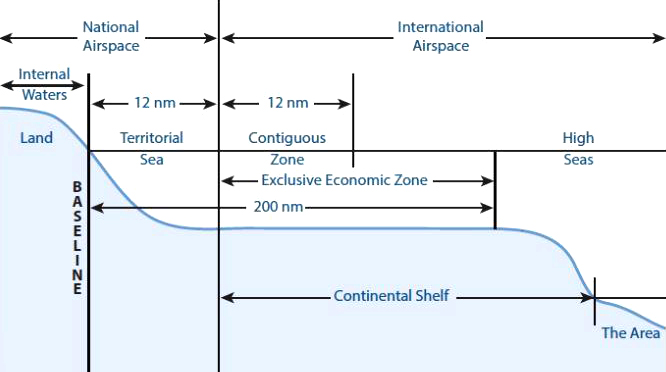High Seas Treaty
What’s in the news?
- The United Nations inked the first ‘High Seas Treaty’ in a bid to protect the ocean bodies of the world that lie outside the national boundaries and form almost two-thirds of the world’s oceans.
- The treaty is an outcome of a decade of talks on this environmental concern. The previous negotiations failed to conclude due to disagreements on funding and fishing rights. The last international agreement on ocean protection was signed 40 years ago in 1982 – the UN Convention on the Law of the Sea.
- The UN High Seas Treaty now brings 30 percent of the world’s oceans into the protected domain, puts more money into marine conservation and sets new rules for mining at sea.
- Previously these water bodies were open for fishing, shipping and to conduct research and only about 1 percent of these waters also known as high seas were under protection which left the marine lives in these waters at high risk of exploitation from threats including climate change, overfishing and shipping traffic.
- As per the red data book of the International Union for Conservation of Nature (IUCN), nearly 10 percent of marine species were found to be at risk of extinction. Further, the IUCN estimates that 41 percent of the threatened species are also affected by climate change.
- The High Seas Treaty now places 30 percent of the world’s international waters into protected areas (MPAs) by 2030.
- The treaty aims to protect against potential impacts like deep sea mining. This is the process of collecting minerals from the ocean bed. The treaty amongst other things will put a restriction on how much fishing can be done on the high seas.
- According to the International Seabed Authority that oversees licensing any future activity in the deep seabed will be subject to strict environmental regulations and oversight to ensure that they are carried out sustainably and responsibly.
About UNCLOS
- The United Nations Convention on the Law of the Sea (UNCLOS), also known as the Law of the Sea Treaty, is an international treaty which was adopted and signed in 1982. The Convention was formed to ensure freedom of shipping navigation at the sea.
- The Convention has created three new institutions on the international scene :
- the International Tribunal for the Law of the Sea,
- the International Seabed Authority,
- the Commission on the Limits of the Continental Shelf.
- India is a party to UNCLOS.
- UNCLOS classifies marine areas into five zones. They are:
- Territorial sea
- Contiguous zone
- Exclusive economic zone
- Continental shelf
- High Sea

Territorial sea
- According to UNCLOS, the territorial sea can be defined as the area which extends up to 12 nautical miles from the baseline of a country’s coastal state. The territorial sea is under the jurisdiction of that particular country; however, foreign ships (both merchant and military) ships are allowed passage through it.
- This type of passage of territorial passage of foreign ships is known as an innocent passage. However, the right to the innocent passage can be suspended if there is a threat to the security of the coastal state.
Contiguous Zone
- The contiguous zone can be defined as the belt which extends 12 nautical miles beyond the territorial sea limit.
- A coastal state’s control on this area is limited to prevention of actions which can infringe its customs, fiscal, and immigration laws. It can also act if any activity in the contiguous zone threatens regulations in the territorial sea.
Exclusive economic zone
- The exclusive economic zone can be defined as a belt of water which extends up to 200 nautical miles from the baseline of the coastal state. Thus it includes both territorial sea and contiguous zone.
- The exclusive economic zone provides the coastal state control over all economic resources such as fishing, mining, oil exploration, and marine research.
- The coastal state also has jurisdiction regarding protection and preservation of natural resources and marine environment.
Continental Shelf
- The continental shelf can be defined as the area whose outer limit shall not exceed 350 nautical miles from the baseline or shall not exceed 100 nautical miles from the 2500 meters isobath.
- Isobath is a line connecting points of equal underwater depth.
- The coastal state has exclusive rights for exploring and exploiting its natural resources in this area. The state also has the exclusive rights to authorize and regulate drilling on the shelf for all purposes.
High Seas
- High seas can be defined as the part of the sea that is not included in the exclusive economic zone, in the territorial sea, or in the internal waters of a coastal state or archipelagic waters of an archipelagic state.
- High seas are open to all states for freedom of navigation, freedom of overflight, freedom to construct artificial islands installation, freedom of fishing, and freedom of scientific research.
Subscribe
Login
0 Comments
